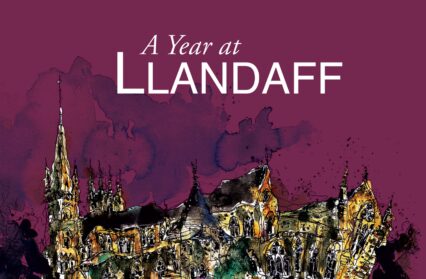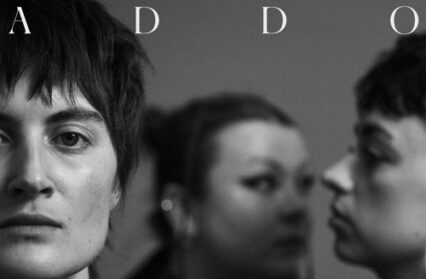Now I am ready to tell how bodies are changed
Into different bodies
Tales From Ovid by Ted Hughes, 1997
Themes of transformation are pervasive throughout classical myth and can also be found in popular music culture, where heroes and heroines are forever changing and reinventing the artistic self in the struggle to survive in the brutal world that is the music industry. Al Alvarez compares this search for artistic identity to the relationship between a patient and psychotherapist, who, when listening to the patient, must distinguish between the genuine emotions and the fake. Alvarez considers that style and achievement of artistic voice take years of study, and writes that the ‘art itself is greater than the sum of the artist’, drawing attention to the concept of charisma – an allusive quality, described in the Oxford dictionary as a divinely conferred power or talent. The charismatic become successful because people believe in them. Followers identify strongly, and often feel empowered to the extent that the artist becomes a symbol of redemptive transformation.
Virginia Postrel in her Ted Talk on Glamour says that the practice of transfiguration is a process of idealisation, glorification, and ultimately dramatisation. This is significant when we consider the narrative arc of Bob Dylan’s career. Anyone who has seen Martin Scorsese’s documentary No Direction Home will remember the young Robert Zimmerman and his search for artistic identity. After leaving home and moving to New York City, Zimmerman became obsessed with the mythology of Woody Guthrie to the point where he sang, played, and even dressed like Guthrie – before finally embarking on a pilgrimage to the hospital where his hero lay dying. In the Guardian article: Bob Dylan visits Woody Guthrie, Casper Llewellyn Smith mythologises the 1961 meeting between the two men as a key event in popular music and infers a passing of an eternal flame: a mystical encounter and transformational moment in the life of a young man on the threshold of tremendous fame and fortune. But whatever your thoughts on the power of myth, it is through the eventual transcendence of emulation that the rechristened Bob Dylan finally became greater than the sum of his influences, and in doing so, fulfilled his potential and achieved what Alvarez describes in The Artist’s Voice.
The concept of the transformational moment is common to most narratives and we can find them within the myths of Jesus Christ and the Great Temptation, Robert Johnson at the Crossroads, and in the Marvel Comic Spider-Man, when, after getting bitten by a radioactive spider, the ordinary boy Peter Parker shape shifts into an extraordinary antihero with the newly endowed super strength of an insect demigod, however. In all the above, it is the transformational moment that is crucial to both the protagonist’s success, and eventual demise. It is by definition, a profound turning point in the dramatic narrative and implies sacrifice in return for preternatural power.
Using a metaphorical framework, the history of rock could be interpreted as a farrago of myths rooted in the classical tradition. This allegorical moment of transfiguration is supported by the view of Professor Robert A. Segal, who writes: ‘Theories need myths as much as myths need theories. If theories illuminate myths, myths confirm theories’. Segal goes on to say that: ‘Gods are credited with creating natural phenomena, while cultural heroes are credited for creating social phenomena’. It seems that in both cases, the mythic act is creation.
Our reaction to the implied narrative in the lives of the musicians is imbued with these unintentional responses. That we may see rebirth in the constant reinvention of David Bowie or interpret the Beatles story as a rags to riches tale is testament not just to the power of myth, but also the exploitation of that need by market forces. The metaphor retains its power and the message finds its medium in whatever culture is available at the time. Narratives from the Bible and Greek drama, as well as Hollywood movies and classic fiction, chime with the semiology of many contemporary acts. Non-Western traditions are represented through comparative mythologies and mystical archetypes. You only have to look at Florence and the Machine to see not just the modern Pre-Raphaelites, but also the White Goddess. In this secular age, paganism has gone mainstream. These unspoken narratives act as a badge of entitlement, authenticating the artist and connecting them to the sacred tradition as cultural shamans.
Ovid’s book of transformations still reverberates. It is as relevant to contemporary culture as it was to its own day. Salman Rushdie retells the myth of Orpheus and Eurydice in the rock and roll novel: The Ground Beneath Her Feet, and in doing so celebrates the relationship between classical mythology and celebrity. Yet when we shine the light of Ovid’s transfigurations on popular culture in an attempt to illuminate a universal truth, it is worth remembering that Charles Martin relates the even earlier Pantomime Dancing as a probable inspiration for Metamorphoses. Martin claims Pantomime Dancing stands as a synthetic form of music and dance devoted to narrative, and argues that Ovid found in the ‘forms changed to new bodies’ the very element needed for enchantment and shape shifting.
Man is least himself when he talks in his own person. Give him a mask and he will tell the truth.
(The Critic as Artist: Oscar Wilde, 1891)
The use of Maskery to influence dramatic action could be a career description of David Bowie and his never-ending reanimation. After all, who better than the chameleon of pop to illustrate the gender bending trickster archetype? Bowie riding the zeitgeist: like a time travelling Zelig forever changing and resisting definition. The Laughing Gnome: The Man Who Sold the World; Ziggy Stardust, Aladdin Sane, The Thin White Duke and The Man Who Fell to Earth … It is significant that Bowie’s early failure and study of mime informed his later success and ability to reinvent. The Elder Statesman has now been canonized with an exhibition at the V&A, his discarded skins on display for all to marvel at.
John Updike famously wrote that ‘celebrity is a mask that eats into the face’, and in doing so, unwittingly described the tragedy of Michael Jackson: a man whose face literally became a grotesque and disfigured mask. Michael Jackson as a child star, home schooled and watching himself as a cartoon character on television, and then, some years later, as a teenager graduating as the most famous pop star on the planet MTV. It seems that the man in the mirror only saw his reflection in the warped tube that was the television, and what he saw, he didn’t much like. Skin bleaching: endless rhinoplasty; Restylane injections, tattooed eyeliner, lip reduction, chin implants, cheek implants, facelifts, forehead lifts, wigs and hair straighteners. Jackson was an unhappy soul, forever cutting pieces off his face, hacking away at his own body until he was all gone. No wonder his heart stopped beating. In a 2002 interview with Martin Bashir, Jackson admitted: ’I would’ve been happier wearing a mask’.
Ovid, the original bad boy of literature, arrived at a precise time in history when the Greek and Roman gods of the old Empires lay broken on the scrapheap of mythology and the new god(s) had yet to arrive. At that time, the Roman Empire was, as Ted Hughes puts it: ‘flooded with ecstatic cults’. In the modern paradigm we see the rise of celebrity in what T.S. Eliot, describes as The Waste Land. This reminds me of a line from Don DeLillo’s Mao II: ‘When the old gods leave the world, what happens to all the unexpended faith?’ The philosopher John Gray believes that the need to worship is hardwired into the human brain. If he is right then people will seek out the old myths in whatever context they put their faith.











